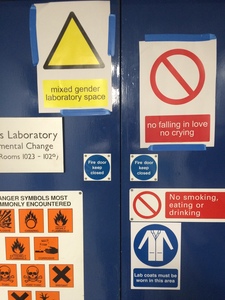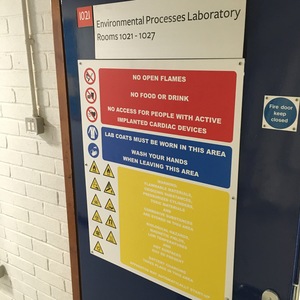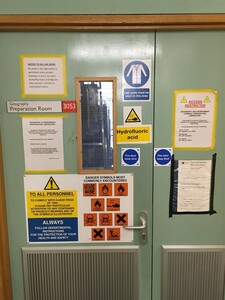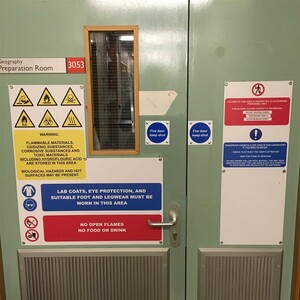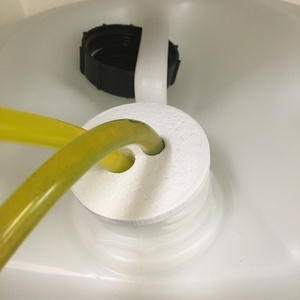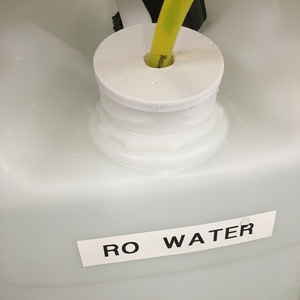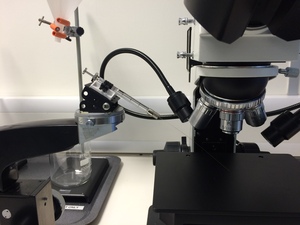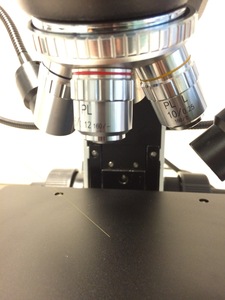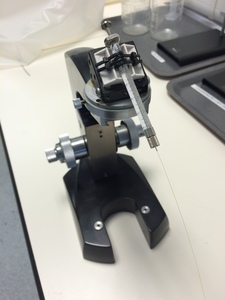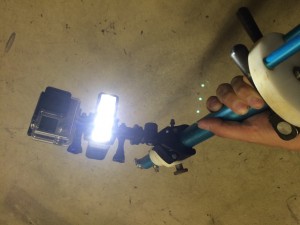I’m sure most laboratories are aware, but there are new requirements for warning labels in laboratories now. The old CHIP pictograms (black on yellow squares) have been replaced with the CLP pictograms (black on white and red diamonds), and although the regulations arrived in 2009, since June 2015 it is a requirement to use them alone. There is an exemption for goods already in the supply chain, so it seems we don’t need to re-label existing stocks, but it seems good practice to have a single, harmonised system in any laboratory.
This also has prompted me to replace our laboratory signage – see the before and after photo’s below. Can you spot the BS3864-1 non-compliances in these photographs?
UPDATE 20.1.16:
I’ve got round for doing upstairs now – here’s the before and after photos.
